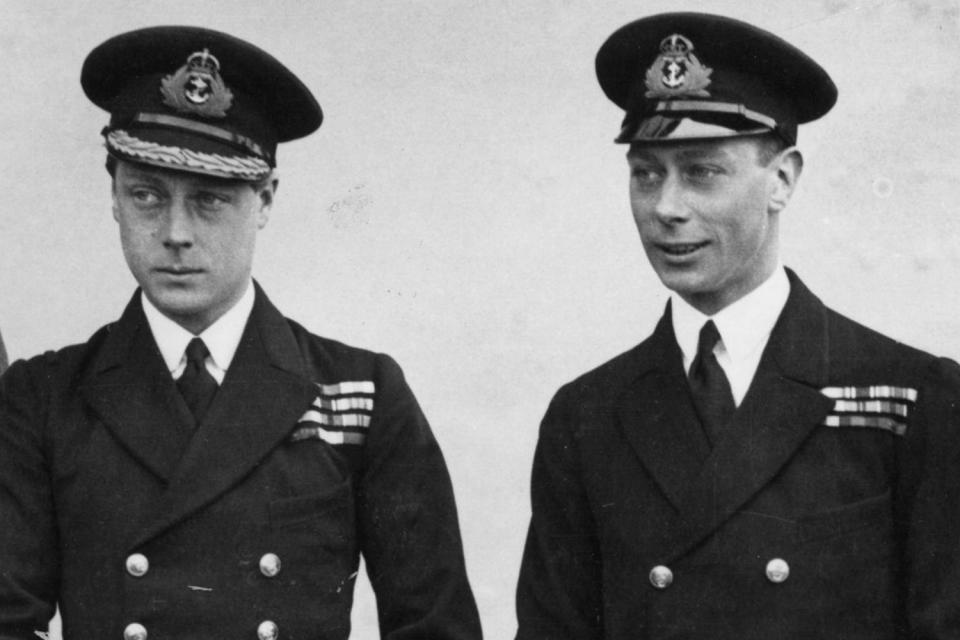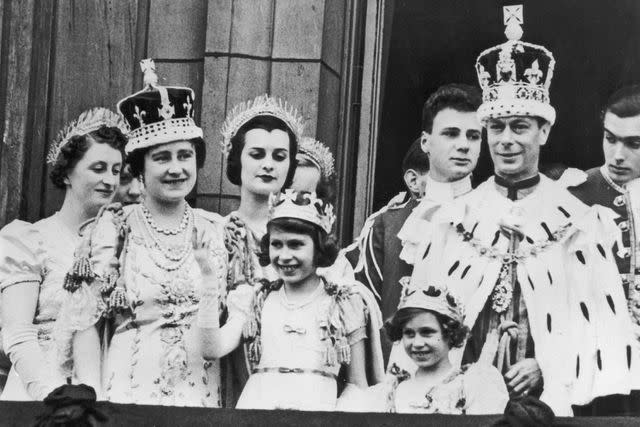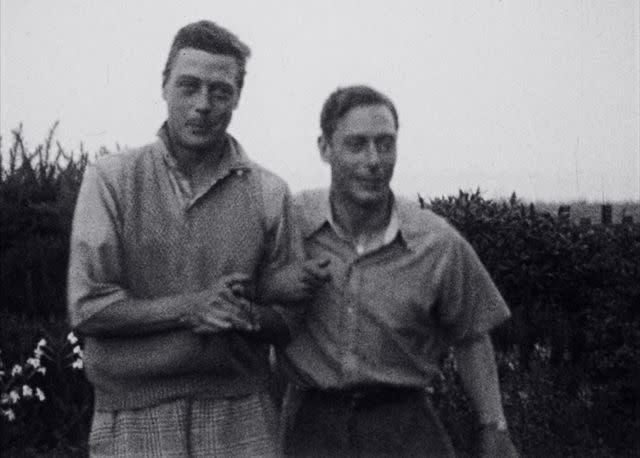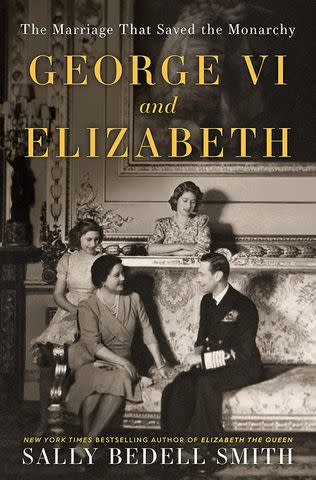Why the Last King to Be Crowned, George VI, Was the Perfect Spare to His Brother Edward VIII
- Oops!Something went wrong.Please try again later.
- Oops!Something went wrong.Please try again later.
- Oops!Something went wrong.Please try again later.
- Oops!Something went wrong.Please try again later.
- Oops!Something went wrong.Please try again later.
Read PEOPLE's exclusive excerpt from royal biographer Sally Bedell Smith's new book, George VI and Elizabeth: The Marriage That Saved the Monarchy

In her new book George VI and Elizabeth: The Marriage That Saved the Monarchy, out April 4, renowned author Sally Bedell Smith explores how George (Prince "Bertie" Albert) wasn't meant to be King but ended up becoming the perfect "spare" to heir to the throne David, who reigned — and abdicated — as Edward VIII.
As the "spare" to Prince Edward, the eldest son and heir, young Albert (known as "Bertie" among family and friends) was diffident and often ill. [He] lacked confidence and was prone to dark moods as well as angry eruptions. Worst of all, this sensitive boy developed a stutter around the age of eight. "Get it out!" his father [George V] demanded, making the stammer worse. He never aspired to be monarch, nor was he groomed for the role. When it was thrust upon him, he wept on his mother's shoulder.
But, while he was still insecure, his wife, Queen Elizabeth, had the utmost faith in him.
Bedell Smith writes, "The whole abdication crisis made him miserable," [his mother Queen Mary] recalled. "He sobbed on my shoulder for a whole hour—there upon that sofa." Bertie called it a "dreadful moment." From her bed in London, Elizabeth wrote to Queen Mary that she had "great faith in Bertie—he sees very straight."

By the day of his coronation, Bertie had taken lessons from speech coach Lionel Logue (a story told in The King's Speech, starring Colin Firth and Geoffrey Rush) and got through his coronation vows, and the public duties and addresses he had to make during the day.
Related:How King Charles and Queen Camilla Will Make Royal History at Their Coronation This May
The author says that he had been unwittingly preparing. "He really did understand what the role of spare was — not in a negative kind of way," she tells PEOPLE. "He found meaning and made contributions to British society. During the 1920s and '30s, there was a fair amount of labor unrest and he was diligent about working with laborers and miners and factory workers and industrial leaders to promote goodwill."

"He also worked to set up programs for well-being, fitness and pension plans and dug in. When he was asked by his father if he would take over as president of the Industrial Welfare Society he said, 'I'll only do it without any damn red carpet!'"
He became known as the industrial prince. "He didn't know it but it helped prepare him to be King because it exposed him to people from all walks of life and further imbued him with duty and service and representing his father. He also did it for himself. It gave him satisfaction and a sense of accomplishment," Bedell Smith says.
His flamboyant brother also conducted tours of mining and industrial areas in his role as the Prince of Wales. "[But] he was much more of a showhorse than a workhorse," the author says.

Then, during the Second World War, King George and his wife Elizabeth and their children (the future Queen) Princess Elizabeth and Princess Margaret epitomized stoicism in the face of the turbulence of the time. And the King quietly impressed leaders and politicians with his insights.
Can't get enough of PEOPLE's Royals coverage? Sign up for our free Royals newsletter to get the latest updates on Kate Middleton, Meghan Markle and more!
"When you see Bertie later as King and you see how much he dug into things, particularly during the war, he really made an effort to learn everything he could about military strategy," adds Bedell Smith. "People who came in for audiences with him were surprised how much he knew."
For more People news, make sure to sign up for our newsletter!
Read the original article on People.

